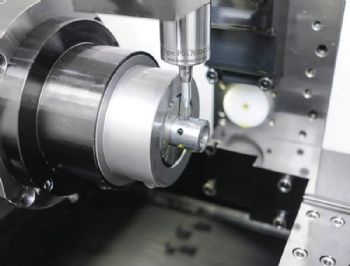
A complex component incorporating four long slots — among other features — was posing problems for Timo Lehmann, the
CEO of Karlheinz Lehmann GmbH.
The solution for this sub-contract manufacturer was provided by a Citizen Cincom M32 turning centre with the addition of a TC76-Digilog touch probe from Blum-Novotest (
www.blum-novotest.com).
Mr Lehmann said: “Highly complex com-ponents are part and parcel of our business, but manufacturing a quick-coupler for a compressed-air input required by Parker Hannifin GmbH was a particularly tough task.
The key components are hardened and coated free-cutting steel with threads, bores and four lightly tapered slots — the latter being crucial to the coupling’s operation.
The parallelism of the slots is only allowed to vary by 2μm from the reference values; otherwise, the automated machine that assembles these components would stop abruptly — and neither would the quick-coupling work, if the tolerance was exceeded.
When assembled, the lightly tapered slots contain balls, which must neither protrude too far nor fall through the slot. Moreover, the task of measuring the slot proved to be almost as challenging as the production process.”
The Blum TC76-Digilog touch probe has provided a cost-effective means of verifying the component’s dimensional accuracy, its analogue measuring capability being particularly advantageous when assessing areas or lines.
“If a switching digital probe were to be used for this application, a very large number of points on the slots would have to be measured in order to attain an adequate resolution.
“However, the TC76-Digilog scans across the surface at a measuring speed of 2m/min, taking 50,000 readings per second.”
At the start of a production run, a reference part is clamped in the machine, and the complete contour of the slot is scanned and recorded. The subsequent production workpieces are measured and compared against the master profile, and any that exceed the tolerance are discarded.
As a result, the tight tolerances of the slot are reliably checked immediately after the cutting process in the lathe.
This manufacturing/measuring process allows 17-employee Lehmann to implement 100% checking, with error trends being detected at an early stage by the company’s ‘evaluation’ software.